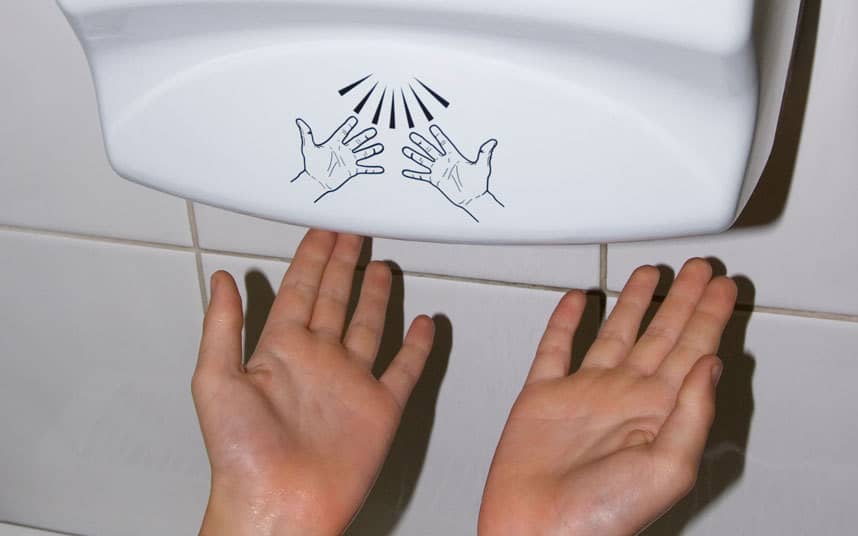The best practice is to wash your hands after using the restroom to keep yourself and the people around you clean and hygienic. This is because the infection causing viruses and bacteria which are found in the restroom can easily transfer from person to person, just with a simple touch. However, once you have cleaned your hands, the hot air-dryers can reverse the effort which you put to clean your hands. A study conducted at the University of Connecticut found that hand-dryers suck in the pathogens from the surroundings and spray them back over everything.
The findings are in line with previous researchers and show that jet-dryers can spread viruses and other germs from hands into the air. The previous studies were claimed to be funded by the paper towel industry to boost their sales. However, this recent research shows that even low-powered-hand-dryers can spread the infectious microbes which are already present in the surroundings. Not only in the hands of the person but all over the person. When you flush a toilet which doesn’t have a lid, the bacteria is thrown into the air. When the dryer is switched on, these microbes are sucked through the intake and are then heated and sprayed back on the moist hands of the person.
The research took place in the bathrooms of the research facility at the University of Connecticut. In one case, the researchers placed plates of agar media for two minutes in the bathrooms with dryers off. In another case, the bacteria were blasted with drier air for 30 seconds. The bacteria were kept 12 inches away from the nozzle of the dryer. When the bathrooms were still, they caught zero to one bacteria landing per plate. But when the blowers were turned on for 30 seconds, 18 to 60 bacteria were collected on the same plates. The germ count was significantly reduced by fitting the dryers with HEPA filters.
The final test involved studying the possibility of other bacteria when the dryers were blowing out. The researchers found that with or without HEPA filters, the blowers were exciting the infectious microbes including Staphylococcus aureus, a bacteria which can cause a range of several diseases. The researchers said that “One reason hand dryers may disperse so many bacteria is the large amount of air that passes through hand dryers, 19,000 linear feet/min at the nozzle. The convection generated by high airflow below the hand dryer nozzles could also draw in room air.”
The study took place in the bathrooms near the lab which was studying the spore-forming bacterium Bacillus Subtilis strain PS533. It is a harmless bacteria but it has a unique resistance to antibiotic kanamycin. Researchers also found that the air dryers were spreading the spores of PS533 and were able to survive from the rest of the germs which were collected from the toilet in the presence of kanamycin. The author of the study said, “PS533 was almost certainly dispersed throughout bathrooms in the research areas as spores, which would easily survive desiccation in room air, as well as the elevated temperatures in hand dryer air; however, growing or stationary-phase bacteria would not be nearly so hardy as spores. However, the facile dispersion of one bacterial strain throughout a research facility should probably be a concern to risk assessors and risk managers when the dispersion of potentially pathogenic bacteria is considered.” This research is a major wake up call for those who are responsible for keeping the research and clinical settings hygienic.

